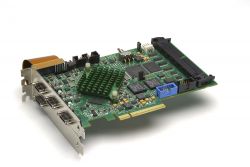Commercial and Collaborative Robot Shipments in E-Commerce Fulfillment to Increase Twenty-Fold by 2026
Robots will start to populate e-commerce warehouses at a high rate. ABI Research, a market-foresight advisory firm providing strategic guidance on the most compelling transformative technologies, estimates that shipments of global commercial and collaborative robots in e-commerce fulfillment will reach 443,000 units in 2026, twentyfold of current shipments in 2018
Robots will start to populate e-commerce warehouses at a high rate. ABI Research, a market-foresight advisory firm providing strategic guidance on the most compelling transformative technologies, estimates that shipments of global commercial and collaborative robots in e-commerce fulfillment will reach 443,000 units in 2026, twentyfold of current shipments in 2018. This includes squat mobile platforms in goods-to-person systems, autonomous mobile robots with manipulators, last mile delivery robots, and collaborative robots.
"The growth of global commercial and collaborative robots also coincides with the robust development of e-commerce in China," said Lian Jye Su, Principal Analyst at ABI Research. "Chinese e-commercial fulfillment robot suppliers, such as Geek+ and Flashhold, are being deployed by major e-retailers, such as Alibaba, JD.com, and Suning." Albeit growing at a slower rate in 2017, Chinese e-retailers have been enjoying double-digit year-on-year growth since 2014. Alibaba has also entered into Southeast Asia markets, bringing Flashhold solutions to overseas warehouses.
At the same time, other companies have taken advantage of the advancement in machine vision and localization and navigation technologies to develop autonomous mobile robots that can share the same workplace with human workers. Robots from Seegrid, Locus Robotics and 6 River Systems are designed to carry and shift heavy payloads within the warehouse, while robots from other suppliers, like Fetch Robotics, IAM Robotics, inVia Robotics, and Magazino, feature built-in effector and gripper systems which enable them to perform goods picking and retrieval. ABI Research estimates that more robots will start to feature grippers in the warehouses to allow them to assist in parcel picking.
"There is no doubt about the severe limitations of these technologies. Existing gripper systems are not designed to pick objects heavier than 10 kilograms. Image recognition technology is still in the nascent state, requiring heavy investment in cloud infrastructure and software capabilities," continued Su. It wont be too long before an autonomous mobile robot does more than just towing, lifting and picking objects. "Actuator and joint systems have become more robust, and 3D camera technology is becoming more accessible thanks to the iPhone X. The maturity of deep learning hardware and algorithm-at-the-edge will soon allow robots to perform both training and inference within the warehouse environment, allowing robots receive training like a human worker."
These findings are from ABI Researchs Commercial and Collaborative Robots for Retail E-Commerce Fulfillment report. This report is part of the companys Robotics, Automation & Intelligent Systems research service, which includes research, data, and Executive Foresights.
# # #
About ABI Research
ABI Research provides strategic guidance for visionaries needing market foresight on the most compelling transformative technologies, which reshape workforces, identify holes in a market, create new business models and drive new revenue streams. ABIs own research visionaries take stances early on those technologies, publishing groundbreaking studies often years ahead of other technology advisory firms. ABI analysts deliver their conclusions and recommendations in easily and quickly absorbed formats to ensure proper context. Our analysts strategically guide visionaries to take action now and inspire their business to realize a bigger picture. For more information about ABI Researchs forecasting, consulting and teardown services, visionaries can contact us at +1.516.624.2500 in the Americas, +44.203.326.0140 in Europe, +65.6592.0290 in Asia-Pacific or visit www.abiresearch.com.
Featured Product

